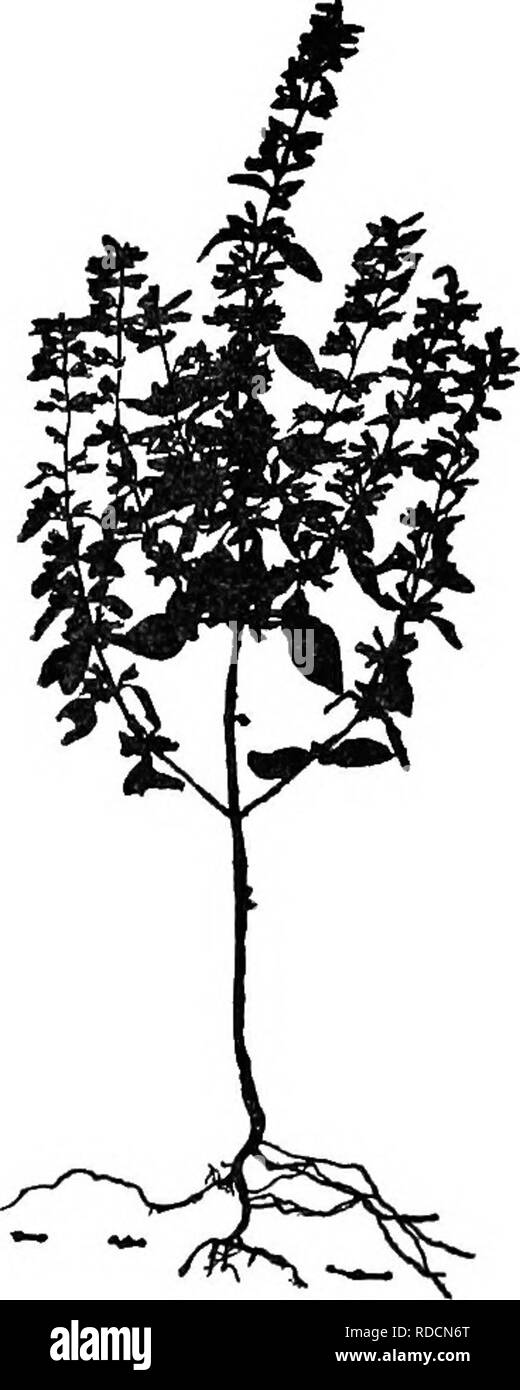. The natural history of the farm; a guide to the practical study of the sources of our living in wild nature. Natural history. 248 THE NATURAL HISTORY OP THE FARM been the earliest of these. Gerard reports PHny as having said that "The smell of mint doth stir up the minde and the taste to a greedy desire of meat"; and for himself he adds, "Mint is marvellous wholesome for the stomacke". (Herbal, p. 681). To the modem cook or confectioner, the herbs themselves are hardly known, tho their essences are used to excess. But our great grandmothers knew them, grew them, cut them,

Image details
Contributor:
The Book Worm / Alamy Stock PhotoImage ID:
RDCN6TFile size:
7.2 MB (220 KB Compressed download)Releases:
Model - no | Property - noDo I need a release?Dimensions:
1000 x 2500 px | 8.5 x 21.2 cm | 3.3 x 8.3 inches | 300dpiMore information:
This image is a public domain image, which means either that copyright has expired in the image or the copyright holder has waived their copyright. Alamy charges you a fee for access to the high resolution copy of the image.
This image could have imperfections as it’s either historical or reportage.
. The natural history of the farm; a guide to the practical study of the sources of our living in wild nature. Natural history. 248 THE NATURAL HISTORY OP THE FARM been the earliest of these. Gerard reports PHny as having said that "The smell of mint doth stir up the minde and the taste to a greedy desire of meat"; and for himself he adds, "Mint is marvellous wholesome for the stomacke". (Herbal, p. 681). To the modem cook or confectioner, the herbs themselves are hardly known, tho their essences are used to excess. But our great grandmothers knew them, grew them, cut them, cured them and then seasoned with them. The plants were gathered about the time when their first flowers were opening, dried rapidly to preserve their essential oils, and put away for winter use. Then they were used with discrimination. It was experience, not chemical analysis, that settled upon sage and summer savory as proper seasoning for sau- sage and roasts; upon parsley and thyme as suitable for stews and soups. Our grandmothers made tea from sage, mint, horehound, balm, catnip, pennyroyal, etc. It was a com- mon practice to steep a quarter of an ounce of the dried leaves in a half pint of boiling water, and then strain and sweeten to taste. Such teas were at once beverages and "simple home remedies." Pennyroyal tea was used to promote perspiration. Hore- hound was good for colds. Each herb had its virtues, and all of them had the great merit of being rather harmless when so prepared and admiriistered. If one had a cold, a pleasant cup of horehound tea (happily supplemented by good hygienic. Fig. 95. Pennyroyal.. Please note that these images are extracted from scanned page images that may have been digitally enhanced for readability - coloration and appearance of these illustrations may not perfectly resemble the original work.. Needham, James G. (James George), 1868-1956. Ithaca, N. Y. , The Comstock Publishing Company